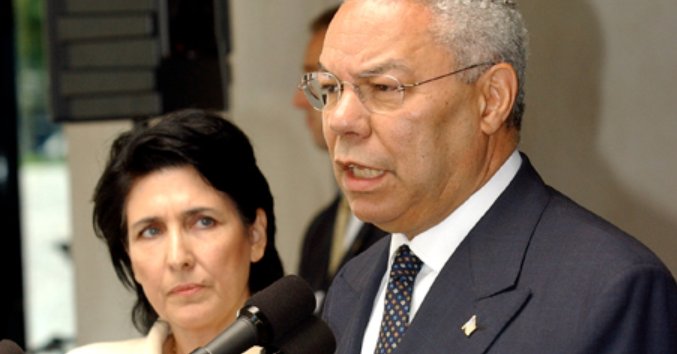Inside the Eastern Partnership (EaP), a collaborative framework between the EU and six neighbouring countries (Ukraine, Moldova, Belarus, Georgia, Armenia, Azerbaijan), different dynamics and different expectations towards the EU can be observed. In the first section of this three-part article about the relationship between the bloc and the EaP countries, we’ll focus on the most Europhilic among the latter : Ukraine, Moldova, and Georgia.
These countries wish to join the EU one day. In particular, Ukraine could apply for membership for as soon as 2023, according to a former Ukrainian diplomat. The new Georgian President and former French diplomat Salomé Zourabichvili affirmed last year that her country would seek to become a member of the EU “even if it meant an innovative approach and knocking on every door”. During an interview for France 24 that same year, the President emphasized that “Georgia’s desire for Europe is not something new”. Concerning Moldova, its foreign minister Nicu Pupescu declared in 2019 that there is “no alternative to strong pro-European integration”. For the governments of these three countries, at least, there is a willingness to show as much Europhilia as possible.
On the EU side, however, accession negotiations with these three countries is not an option for now. In the last few years, enlargement has increasingly become a divisive topic. President Macron of France, for instance, recently vetoed the opening of the accession talks with North Macedonia and Albania, two countries which are much closer to the EU from an institutional point of view than Ukraine, Moldova, or Georgia. Later, France issued a non-paper recalling the necessity of deepening the EU integration prior to enlarging further.
The EU set up the EaP in 2009 so that it could pursue effective cooperation with its eastern neighbors without enlarging itself indefinitely. How are the three would-be members of the EU cooperating with the EU within the Eastern Partnership, and how is each one trying to set up its own privileged relationship with the bloc ?
The Eastern Partnership : a unique cooperative framework in the EU’s external policy
The Eastern Partnership is often considered the pillar of the European Neighbourhood Policy, this latter being the core of the EU’s external policy. The EP therefore has a great importance for the EU, and has helped to politically and economically stabilize its neighbourhood after the EU’s enlargement to Central Europe in 2004. From that moment forward, the bloc had common borders with Ukraine, Moldova, and Belarus, former Soviet republics who did not undergo a democratic transition and who are still mired in political and economic turmoil.*
The Eastern Partnership has another rationale : thwarting Russian influence in the region, as well as in Central Europe. It should come as no surprise that the two governments who first suggested the implementation of the Eastern Partnership in 2009 were Poland and Sweden.
The EaP is a unique two-level forum. Firstly, a multilateral framework which gathers experts from the concerned countries (the three aforementioned countries plus Armenia, Belarus, and Azerbaijan) to take part in working groups with the EU, and secondly, biannual political meetings between the foreign ministers, heads of government, and heads of state of each of the EaP countries. According to some experts (like Andrea Gawrich), the multilateral framework is a first lever of Europeanization, especially in the fields of politics, economy, human rights, civil society, and sustainable development. The different panels of discussion which the experts participate in allow them to share a variety of perspectives and best practices.
In 2017, the Eastern Partnership Summit issued the 20 Deliverables for 2020, a roadmap of 20 key actions to be implemented in four fields of cooperation : a stronger economy, a stronger governance, a stronger connectivity (especially transportation and energy) and a stronger society (mostly through visa liberalisation towards the EU) The results of this roadmap have been mixed : in spite of the significant progress made in economic and digital transformation, as well as in transportation, little has been accomplished in the way of creating clean, efficient energy sources. In May 2020, the conclusions of the European Council reaffirmed the strategic importance of the Eastern Partnership for the next decade, and welcomed significant achievement in the collaboration.
The EU is also helping its partner countries during the coronavirus pandemic : the European Commission committed in April to sending €883 million to support health and the macroeconomic sectors, of which €80 million are already being used for immediate needs. Ukraine, Moldova, and Georgia have received respectively €190 million, €87 million, and €183 million. The EU’s generosity stands in stark contrast to the behavior of Ukraine, Moldova, and Georgia’s other big neighbor, Russia, who has preferred to send waves of disinformation rather than aid.
The Association Agreements : towards a further cooperation with the three countries
The multilateral framework also provides a way for some countries to go further and sign agreements with the EU. As of today, Ukraine, Moldova, and Georgia have signed Association Agreements, comprehensive treaties between the EU (under article 217 TFEU), its Member States, and a non-EU country that creates a plan for co-operation between them. Areas frequently covered by such agreements include the development of political, trade, social, cultural and security links.
These agreements contain many binding measures (comparable to but different from the acquis communautaire for the countries who are to join the EU). This is especially noticeable in the field of energy.
Association Agreements have led to concrete results, both on the political and economic front. They have led to vias-free regimes, enabling many people to travel to the EU, including students who can also benefit from academic exchange programs like Erasmus +. Free trade agreements have raised the share of the EU in the trade of Ukraine and Moldova too. According to the European Council on Foreign Relations, “the Deep and Comprehensive Free Trade Agreements (DCFTAs) the EU signed with some Eastern Partnership countries appear to have led to a rise in the bloc’s share of some of these countries’ exports : to 43 percent for Ukraine and to 63 percent for Moldova by 2018. Georgia’s share is stagnating but, even so, the EU remains the country’s main trade partner. The case of Moldova, in particular, shows that easing trade with the EU can mitigate Russian embargoes and reduce their effectiveness as mechanisms to pressure former Soviet states”.
A frustrated relationship ?
The nature of the EU’s cooperation with Ukraine, Georgia and Armenia is varied and the three governments are all highly motivated. However, the EU has already stated many times that it is not considering extending the EU’s border further East anytime soon, despite multiple calls from these three countries to open accession talks. The different expectations on both sides leads to misunderstandings, and could eventually generate frustration among the citizens in Eastern Europe.
Ukraine’s and Moldova’s societies are especially divided on whether they should embrace a closer relationship with the EU or keep stronger ties with Russia. We have seen Russia’s retaliations on Ukraine when the latter decided in 2013 to sign the Association Agreement with the EU, and during the subsequent pro-European Maidan Revolution. In Moldova, the Socialist Party is still strongly in favour of Moscow’s interests. President Igor Dodon is the most prominent example of the willingness to keep privileged links with Russia at any price. Choosing between the EU or Russia could lead to very strained relationships in both countries. Georgia is less concerned, given the fact that two Georgian regions - South Ossetia and Abkhazia - are occupied by Russia. These illegal invasions have fueled patriotic feelings and anti-Russian protests.
However, it is easy to worry that people and elites in Ukraine, Moldova and Georgia will become increasingly frustrated with the absence of a clear signal from the EU and turn their back on the Bloc, embracing cooperation with other increasingly powerful actors in the region, like China, whose “Belt and Road Initiative” extends into the South Caucasus. To find a way to satisfy these three countries even without accession talks, the EU will have to invest even more in their economies, for example through a vast investment plan to spur energy transition and sustainable development. The European Green Deal and its so-called “green deal diplomacy” offers a relevant framework to start thinking about that.


1. Le 25 mai 2020 à 16:25, par Francesco Randi En réponse à : Ukraine, Moldova, and Georgia : paving a path to the EU ?
En réponse à : Ukraine, Moldova, and Georgia : paving a path to the EU ?
Great article and topic ! In these partnership agreements, is there any provision regarding Russian minorities in those countries, like in the region of Odessa or in Transnistria ? As you say, the choice between EU and Russia will lead to internal strains in those countries. While of course there is an incompatibility of the Russian government with European values, agreements that do not start from the acceptance that there is necessarily a broad « border » or transition zone that bridges the two cultural areas, and therefore try to impose an identification with on or the other bloc, are not a long lasting solution (see, for example, the positive outcome in South Tyrol between Italy and Austria compared to what happened with Crimea). And the rights of minorities cannot generally be left entirely to the host country, as is clear, for example, with Russians in the Baltic states and their diffuculties in accessing citizenship after the independence from the Soviet Union. During the Soviet occupation, those people did not choose to move there for some geopolitical belief, but likely because of jobs (if they even had the choice). They nevertheless got caught in inevitable post-independence mechanisms. It would be very interesting to understand what the EU is doing to deal with such issues.
Suivre les commentaires : |
|
